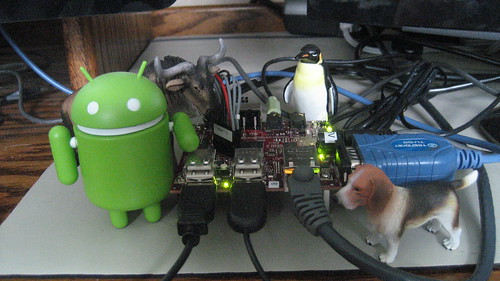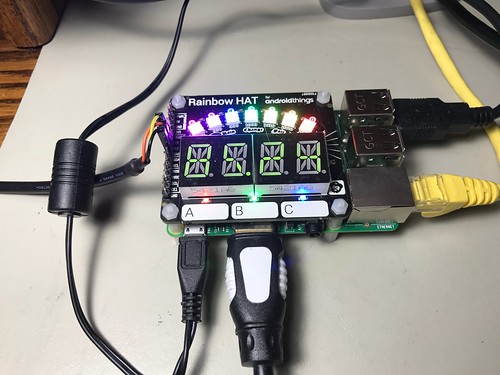
Android has a rich set of features, many of which would be really useful in an embedded product at the higher end. It is architected to make use of multiple network devices - for example, WiFi and a cellular modem - which is becoming common in the kinds of things I work on. Android has a mature tool chain and development infrastructure that includes stuff like a graphical IDE and a debugger. It is a well understood platform on which to deploy third-party applications, which at least one of my clients is eyeing as a business model for one of their products. And best of all, Android has enormous market forces incentivizing other folks to do a lot of the work for you.
I never got any traction on that idea. But maybe now that Google is promoting Android Things - as in Android for the Internet of Things - that will change. Android Things (formerly the platform known as "brillo") is a stripped down version of Android that can be run headless. It has the usual Android Run Time (ART) Java Virtual Machine (JVM) plus support for native C and C++ code, so you can port your legacy drivers and libraries, but do your new application development in an object oriented language that has first-class built-in support for threading, synchronization, and lots of other useful stuff.
Or will. Currently Android Things is just a pre-built developer preview that you can load on a selection of inexpensive development boards like the Raspberry Pi 3. It includes drivers and Java APIs for common embedded hardware interfaces like an Inter-Integrated Circuit (I2C) bus, a Serial Peripheral Interface (SPI) bus, Pulse-Width Modulation (PWM) output, and General Purpose Input/Output (GPIO) pins.
Third-party developers have in turn written higher level drivers and Java APIs on top of these for a selection of peripherals on commercially available expansion boards. For the Pi, that would be the Pimoroni Rainbow Hat. The Rainbow Hat has an APA102 LED strip (SPI), a BMX280 temperature and pressure sensor (I2C), two two-character HT16K33 alphanumeric segments (also I2C), a piezoelectric buzzer (PWM), and some discrete LEDs and buttons (GPIO). Below is a photograph of a Rainbow Hat on a Pi running my single threaded RainbowHatDemo application.

The source for Android Things hasn't been released yet, so porting any of my C or C++ libraries will have to wait. But the developer preview, with a Raspberry Pi and the Rainbow Hat, is a great way to see where this is all going. I wrote some toy applications using Android Studio just to try to remember how to use Java, which I haven't done anything serious with in a decade. You can find the repository, code-named Deringer, with all my source code as Android Studio projects, on GitHub. Below is a little code snippet from my multi-threaded RainbowHatThing application that reads the temperature and pressure sensor and logs the results.
public void run() {
Log.i(getClass().getSimpleName(), "begin");
while (!lifecycleDone()) {
try {
float[] readings = sensor.readTemperatureAndPressure();
float centigrade = readings[0];
float fahrenheit = (centigrade * 9.0f / 5.0f) + 32.0f;
float hectopascals = readings[1];
float inches = hectopascals * 0.02953f;
Log.i(getClass().getSimpleName(), centigrade + "C " + fahrenheit + "F " + hectopascals + "hPa " + inches + "in");
pause(1000);
} catch (IOException e) {
// Do nothing.
}
}
Log.i(getClass().getSimpleName(), "end");
}
Will Android Things take off as a platform for the more capable IoT targets? No clue. But for sure there are many economic reasons to take this very seriously.

No comments:
Post a Comment